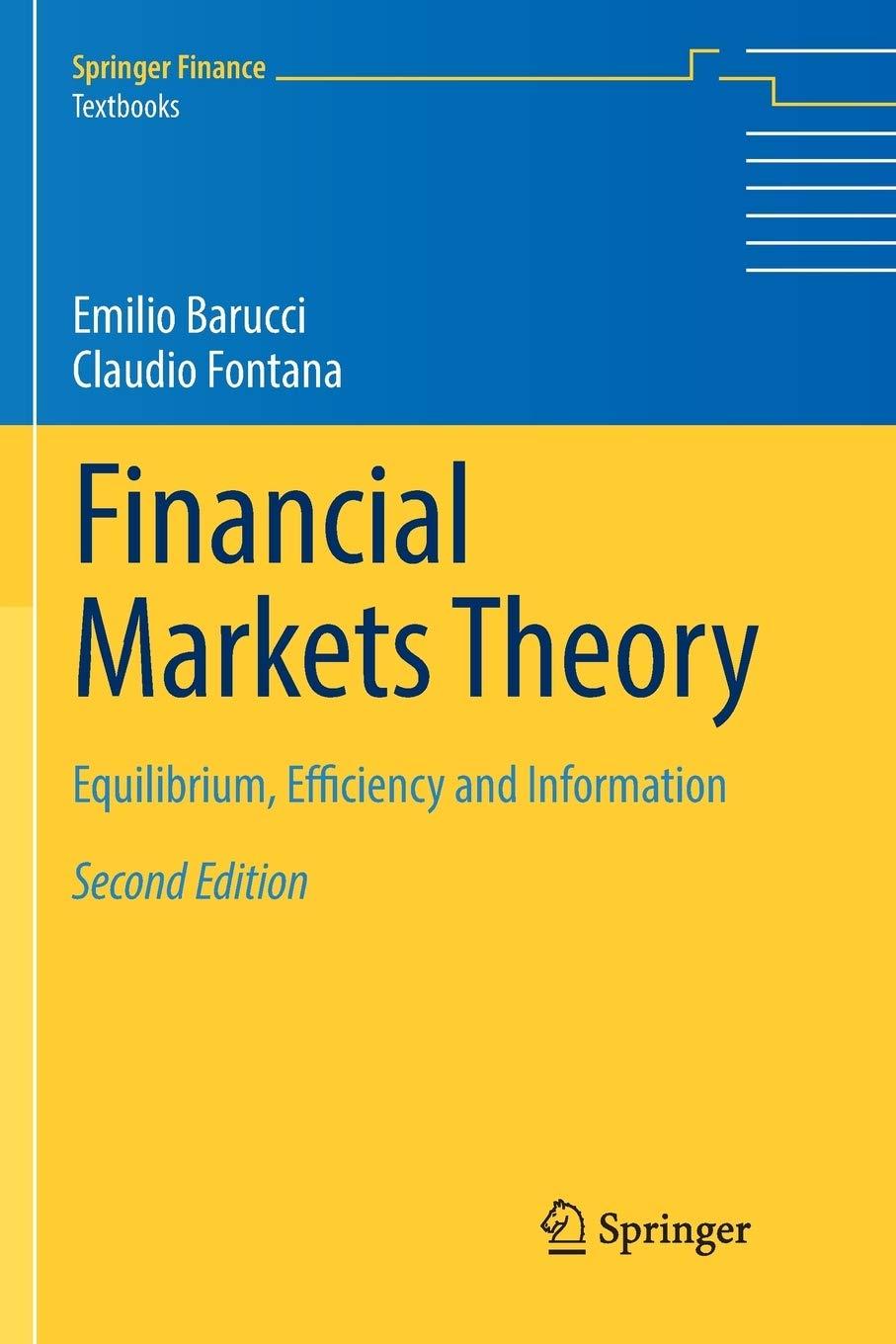Consider a strictly increasing and strictly concave utility function (u) and suppose that there exist (N) risky
Question:
Consider a strictly increasing and strictly concave utility function \(u\) and suppose that there exist \(N\) risky assets whose returns \(\left(\tilde{r}_{1}, \ldots, \tilde{r}_{N}\right)\) admit the representation
\[\tilde{r}_{n}=\sum_{\substack{k=1 \\ k eq n}}^{N} \lambda_{k} \tilde{r}_{k}+\tilde{\epsilon}_{n}, \quad \text { for all } n=1, \ldots, N\]
where \(\sum_{k=1, k eq n}^{N} \lambda_{k}=1\), for all \(n=1, \ldots, N\), and \(\tilde{\epsilon}_{n}\) is a random variable satisfying
\[\begin{equation*}\mathbb{E}\left[\tilde{\epsilon}_{n} \mid \tilde{r}_{1}, \ldots, \tilde{r}_{n-1}, \tilde{r}_{n+1}, \ldots, \tilde{r}_{N}\right]=\mathbb{E}\left[\tilde{\epsilon}_{n}\right] \tag{3.55}\end{equation*}\]
for all \(n=1, \ldots, N\). Show that \(w_{n}^{*}>0\) if and only if \(\mathbb{E}\left[\tilde{\epsilon}_{n}\right]>0\), for all \(n=1, \ldots, N\).
Step by Step Answer:

Financial Markets Theory Equilibrium Efficiency And Information
ISBN: 9781447174042
2nd Edition
Authors: Emilio Barucci, Claudio Fontana





